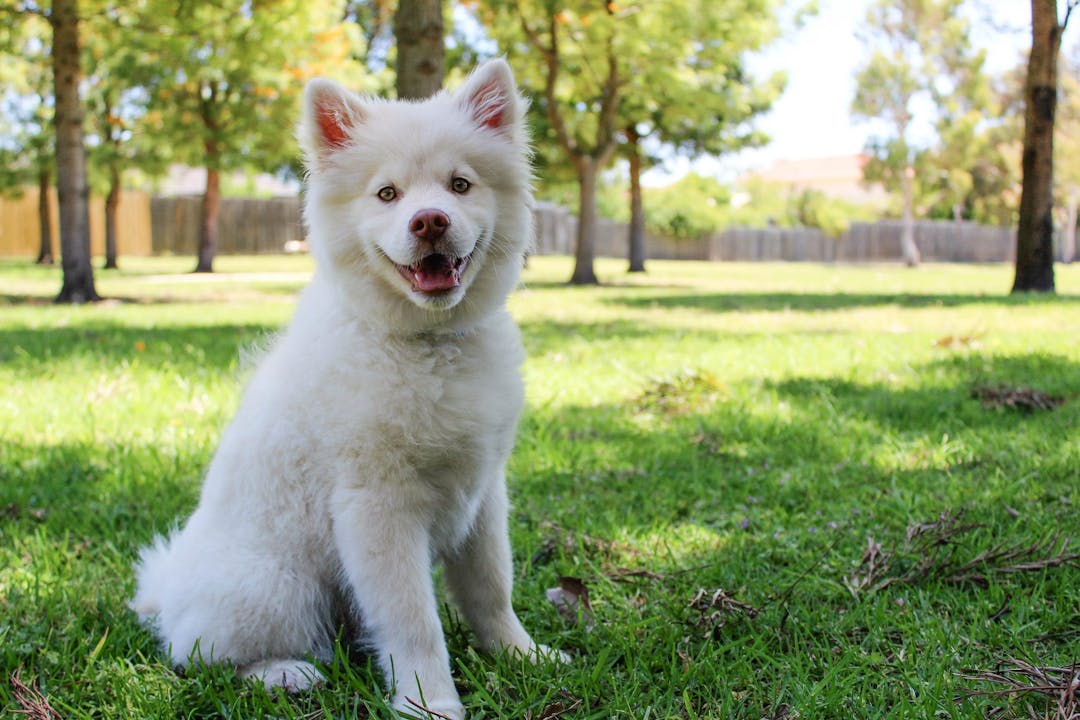Whether you’re taking your dog hiking, camping, enjoying a day at the beach, or just going for a walk, the possibility of heat stroke shouldn’t be far from your mind. Even if it’s not scorching hot outside, dogs generally run hotter than we do and there are additional risk factors depending on breed, age, size, and weight. Read on to learn more about when it’s too hot, the warning signs of a heat stroke, how to prevent heat stroke in dogs, and how to keep your dog cool.
How Hot is Too Hot for My Dog?
A dog’s body is approximately 101 to 102.5 degrees F, so even if the ambient temperature feels OK to you, it might be too hot for your dog. Be extra careful when temps rise above 80 degrees. Dogs are more susceptible to heat stroke than we are because their bodies are not as efficient at getting rid of heat. The only ways they can remove heat from their bodies is to pant or through sweat glands in their nostrils and on their paw pads. That’s why dog moms and dads should monitor both humidity and temperature. If humidity is high, your dog won’t be able to cool down fast enough and could be at risk for heat stroke.
During walks, don’t forget to check the temperature of the ground. Put your hand on the pavement to test the temperature and if it’s hot, make sure your dog doesn’t have to stand on it for too long. When it’s really hot, use booties for your dog or avoid pavement entirely. Blacktop can get up to 140 degrees F in the sun! Not only will your dog get burned, but the rising heat can contribute to full body overheating.
You should be especially cautious if your dog is over 110 pounds (regardless of breed), over 12 years old, a puppy, or a brachycephalic breed (dogs with short snouts and flat faces), including:
- Bulldogs: French, American, and English
- Boxers
- Cavalier King Charles Spaniels
- Shih Tzus
- Pugs
Because brachycephalics have short snouts, small nostrils, and narrow windpipes, it’s harder for them to expel heat through panting.
Finally, never leave your dog alone in the car—even if it doesn’t feel that hot outside. On an 85 degree day, the temperature inside a car with slightly opened windows can reach up to 102 degrees within 10 minutes. And after 30 minutes, the temperature could go up as high as 120 degrees. Once the temperature reaches 70 degrees, it’s not safe to leave your dog in the car.
Warning signs: What to Look For
Now that you know some of the risk factors for heat stroke in dogs, here’s how to tell if your dog might be overheated:
- Heavy Panting
- Looking for shade
- Continuously lying down, excessive tiredness, or lethargy
- Drinking a lot of water
- Dark or bright red gums
If you don’t take steps to cool down your dog when they overheat, their symptoms will likely progress. Here are the much more serious signs of heat stroke:
- Frantic panting
- Drooling
- Rapid heart rate
- Vomiting
- Bloody diarrhea
- Collapse
Over time, a dog experiencing a heat stroke could develop dilated pupils, lack of coordination, or seizures. A body temperature above 103 degrees is a sign of overheating—a temperature 106 degrees and above could be a sign of a heat stroke.
Heat stroke in dogs can cause permanent organ damage or even death, so be sure to contact a vet as soon as you notice any of the symptoms above.
Keep Your Dog Cool
If you notice that your pooch seems to be overheating, you must take immediate steps to help your dog cool off. Here are some tips:
- Give your dog some cool water—carry some with you if you’re on the go
- Take breaks during walks and only go out in the early morning and late evening
- Use rubber-soled booties on their paws
- Stay in the shade whenever possible
- Use cooling apparel like a cooling vest, bandana, or collar
- Fill a spray bottle with ice water and gently mist your dog’s head and belly
- Buy a cooling pad
- Keep a digital thermometer and lubricant handy in case you need to take their temperature
It might seem like a good idea to get your dog a really close trim as the warmer months approach, but that will actually do more harm. Your dog’s coat is designed to protect them from the heat—shedding allows cooling air to circulate close to their skin, even in double coat breeds like Golden Retrievers, Huskies, Pomeranians, Australian shepherds, and Corgis. Giving your dog a close shave will also leave their delicate skin more vulnerable to the sun’s UV rays, putting them at greater risk for skin cancer. Regular trims are OK, but all you have to do to prep for hot weather is give them a thorough brushing to remove any excess hair.
One more thing to keep in mind—even if you feel like you’ve cooled your dog down enough, the full impact of a heat stroke might not show up right away. It’s OK if you don’t want to rush to the nearest emergency clinic—if you feel unsure, you can always contact a veterinarian through Airvet any time you have questions.
Photo by Andreas Wohlfahrt.





